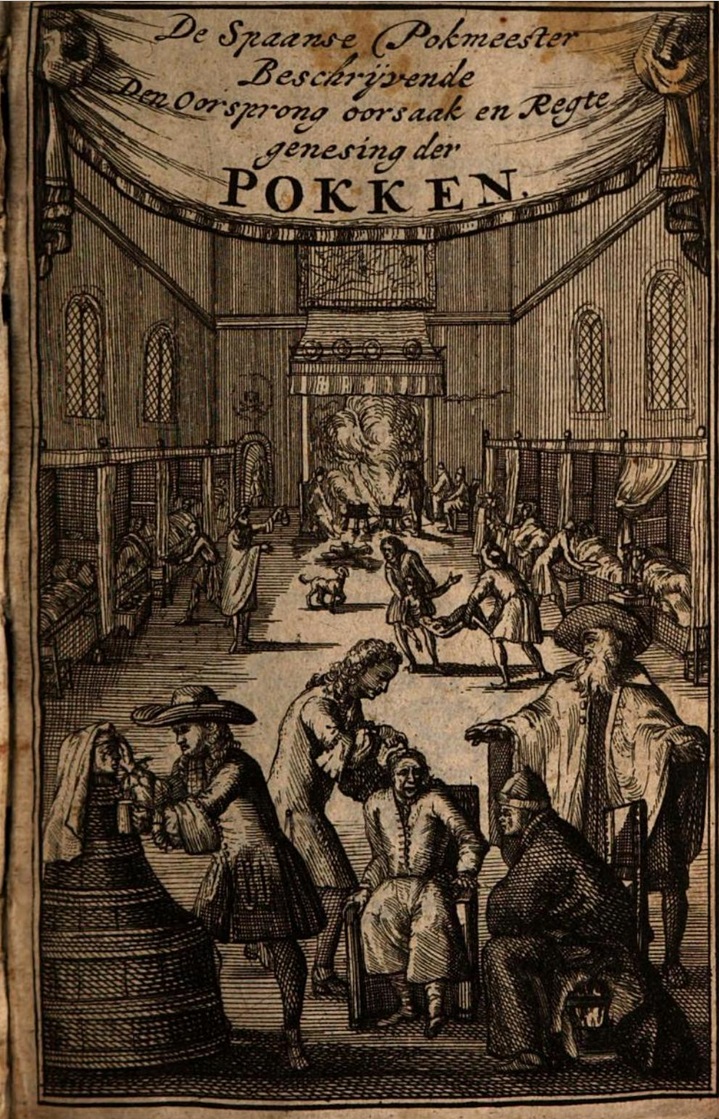
displaying the treatment of syphilis in a 17th century hospital
Catalogus librorum (…) Petri de Graaf (…), p. 54, no. 292 (Medici & Philosophici in Octavo)
During the 17th century syphilis was a widespread epidemic, and students, soldiers and sailors were particularly affected. This book delves into the origins and causes of this venereal disease, also known as the Spanish pox, and provides examples of various treatments. The engraved frontispiece depicts syphilis patients in a hospital. Treatments ranged from mercury skin applications and ointments to sweat baths to induce salivation and perspiration which were thought to eliminate the syphilitic poisons. The presence of this book in Pieter de Graeff’s action catalogue could suggest that a family member may have been affected by this disease. Although a definitive post-mortem diagnosis is of course impossible after several centuries, in the monograph I propose a hypothesis, drawing from the gathered archival sources.

Browse through this book in Google books
Consult and download the annotated transcription of Pieter de Graeff’s book auction catalogue here.
Further reading:
C. Piccoli, Pieter de Graeff (1638-1707) and his treffelyke bibliotheek (Brill, 2025).
Written by Chiara Piccoli